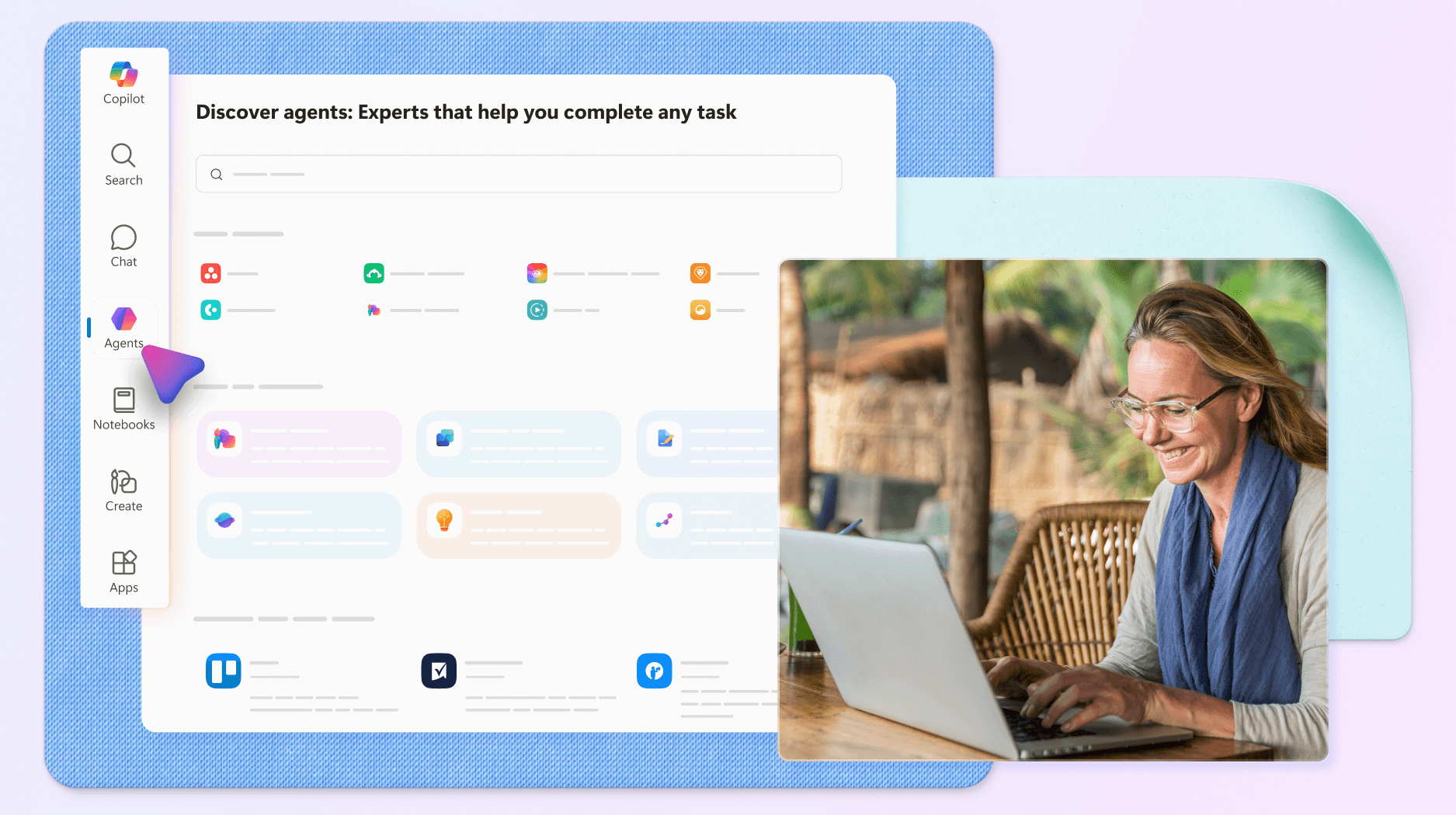Copilot to Agents: How AI is Evolving Work Inside Businesses

Introduction
AI at work is no longer a futuristic concept — it’s happening now. With Microsoft’s recent announcements about expanded model choice in Copilot and the introduction of agents in Microsoft 365, the conversation is shifting from "what AI can do" to "how businesses can harness it effectively."
For leaders, the opportunity is exciting, but the path forward can feel complex. In this article, we’ll explore what these changes mean, why they matter for your business, and how to adopt them without disruption.
The Problem / Context
Despite enthusiasm, many organisations still struggle with AI adoption. Microsoft’s 2025 Work Trend Index revealed that while 81% of leaders plan to integrate agents, only 24% have done so organisation-wide. The reasons? A lack of clarity about where to start, uncertainty over which solutions to trust, and concerns around governance.
This gap represents both a challenge and a massive opportunity: companies that move early to embed AI at scale will unlock competitive advantages in productivity, innovation, and workforce engagement.
Key Insights / Lessons
1. Choice Matters in AI
One size does not fit all. Microsoft is expanding model choice in Copilot, giving organisations flexibility to pick the right AI model for their needs — whether for advanced reasoning, cost efficiency, or specialised domain tasks. This ensures leaders can align AI with both technical and business goals.
2. Agents Are the Next Frontier
Think of agents as customisable digital teammates. From comparative market research to IT helpdesk automation, agents handle repetitive and complex workflows. The new Microsoft 365 Agent Store brings ready-to-use solutions from Microsoft and trusted partners, making adoption faster and safer.
3. Trust and Governance Are Non-Negotiable
AI isn’t just about speed — it’s about safety. Microsoft is embedding enterprise-grade security, compliance, and governance into agents, while IT leaders can manage access, monitor usage, and enforce controls through the Microsoft 365 admin centre. This balance of innovation and trust is critical for adoption at scale.
4. Build or Buy? Both.
Organisations now have options: use pre-built agents from partners like Asana or Snowflake Cortex, or build custom ones with Copilot Studio. This flexibility lets businesses innovate at their own pace — starting small with ready-made tools, then expanding into tailored solutions.
Practical Application
So how can businesses start today?
- Audit workflows: Identify high-friction, repetitive tasks.
- Start small: Pilot a single agent (e.g., project management or reporting).
- Engage IT early: Define governance policies before scaling.
- Empower teams: Encourage employees to experiment with agents in safe, guided ways.
- Measure outcomes: Track time saved, costs reduced, and employee satisfaction.
The Role of AI Copilots
AI copilots — and now agents — aren’t replacing humans. They’re removing busywork and amplifying human strengths. Imagine a sales team that spends less time compiling reports and more time closing deals, or an IT department that can resolve requests instantly through an agent.
The measurable benefits are clear:
- Hours saved per employee each week.
- Faster decision-making through accessible insights.
- Higher employee engagement as people focus on meaningful work.
Conclusion
The future of work is arriving — and it’s agent-powered. Businesses that embrace flexibility in AI models, leverage ready-to-use agents, and embed governance from the start will be the ones that thrive.
The key question is: will your business wait, or will you lead the way in this next wave of AI transformation?
Curious about how an AI copilot could support your business? Get in touch.
#AI #FutureOfWork #BusinessGrowth #Leadership






